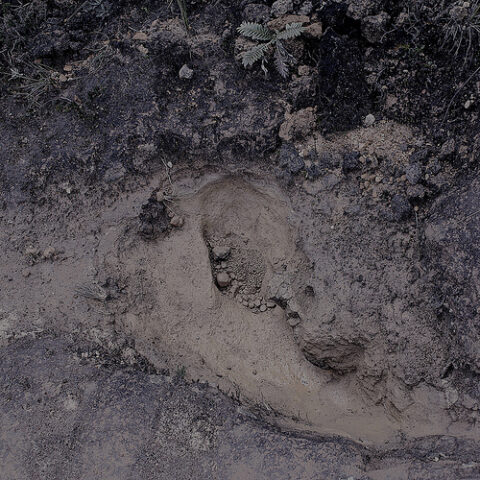Michael Raphael is a professional sound recordist and designer. After a long career in radio, he is the creative force behind the boutique sound effect studio Rabbit Ears Audio and the long-running field recording blog Field Sepulchra. Sonic Terrain is honored to have him on board as a contributor.
Over the years, I’ve become obsessive about underwater recording. I took my hydrophones to rivers, lakes, glasses of water, bathtubs etc. An entire new world of sound opened up to me, and I have been enchanted by it. The excitement that I first experienced when I plugged in a hydrophone pushed me to make this library.
When I started planning this library, I wanted to find a location with a wide variety of water currents. Water doesn’t make much sound when it is still, so I knew I was off to a good start when I heard about some waterfalls from a relative.
The location has over three tiers of waterfalls with corresponding streams, and there is a swimming hole at the base of one of falls. I took two trips to the falls because the initial recordings were so compelling, I thought I could generate more interesting material.
REA_003 HYDROPHONIC Waterfalls by sepulchra
The recordings demonstrate the diversity of sound that exists in that location. I found it challenging to predict what the water would sound like just by looking at the flow of the current. I would record the waterfall running off into a stream in one location, which would sound deep and full of gurgles, but then record in another spot that looked similar and it would sound completely different. This meant that I spent most of the day running around and dropping my hydrophones in any spot that looked like it had an interesting current flow. I also did not predict how cold the water would be. It was over 70 degrees fahrenheit outside, but the water always felt about 40 degrees fahrenheit. After hours of recording, I was freezing my butt off!
Do you like bubbles? Another component of the library consists of sounds made by scuba-related equipment. I wanted to deliver content that could be used to cover any scuba-based needs, but also provide sounds that could be used as design elements.
REA_003 HYDROPHONIC Scuba by sepulchra
I also spent a fair amount of time in a pool covering swim moves. When I started working, I encountered this happy accident:
REA_003 HYDROPHONIC Drone by sepulchra
A large work crew was doing some heavy construction down the block. That sound, combined with the house’s HVAC system running underground next to the pool, generated that killer sound. I ended up having to wait out the work day before I could record anything that did not sound like a giant drone.
Lastly, some of my favorite material came from experiments in the tub . . . some of the props from that day included a toy boat, compressed air; my two favorites were a deodorant aerosol can and a steam cleaner:
REA_003 HYDROPHONIC Props by sepulchra
These are just a few examples of what can be found in the complete library.
I love the subaquatic sounds in this library, but they were not without their challenges. Hydrophones are a lot of work! I wish you could just drop them in the water and everything would be perfect but that is far from the case. Hydrophones are incredibly susceptible to handling noise, which often is generated from cable movement. When hydrophones are placed in direct flows of water, turbulence is always an issue and it is only through continued experimentation that solutions can be found. Sometimes, the more interesting recordings are the ones outside of the path of direct current. It is a constant learning process, but I have found that the more tension there is on the cable when it is suspended in current flows, they better off you’ll be. You’ll still want some strain relief at the connector, but the part of the cable that is suspended in water should be taught.
These mics are also difficult to trouble shoot for one major reason: you can’t find your sound source easily. I was recording ambiences in the Atlantic Ocean near Coney Island and at one point I experienced and awful high frequency clicking sound. I still have no idea what it was because I simply could not locate it. It could have been a distant ship, some shrimp, but I just had to wait it out. Also, hydrophones often don’t react too kindly to be sprayed with cheap deodorant sprays! If you know what’s good for you, spring the extra few bucks and get the good stuff! Your hydrophone will thank you. Seriously, when placing the hydrophone in or around chemicals it is extremely important to clean it as soon as possible.
This library was also about testing my body’s tolerance to cold waters. I love nature recording and nature, but I’m not always prepared for nature. Luckily, I was able to borrow a wetsuit for the waterfall recordings because the waters were freezing. It was early September when I went back the second time, the water was extremely cold, and I was damn grateful for that wetsuit.
Remember kids: Be prepared!






